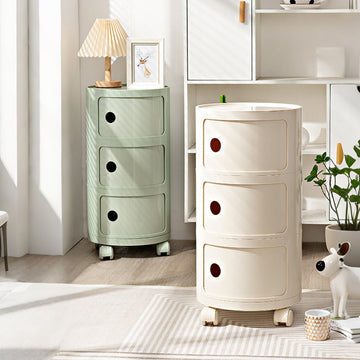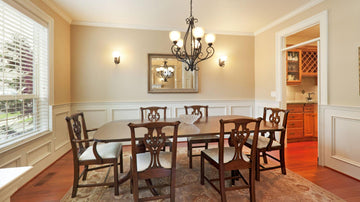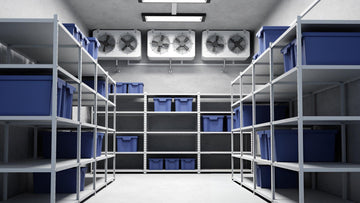Table of Contents
I didn’t think much about coffee table sizes until I bought one that looked amazing online—but once it was in my living room, it just didn’t work. It was too wide, and suddenly I had nowhere to walk. That’s when I realized: size matters more than we think.
If you’re in the middle of furnishing your space or just feel like your current setup is a bit off, this post might help. I’m going to break down the typical coffee table dimensions and explain how to figure out what size actually works in your room. Nothing too technical—just some real-world tips to avoid the kind of mistake I made. And hopefully, save you from sending a table back.

Standard Coffee Table Dimensions
Most people don’t really think about coffee table size until it’s too late. Like, you’ve already bought one, brought it home, and then... something feels off. Maybe it blocks the walkway. Or it just looks weird next to the sofa. I’ve been there.
Let’s break this down into three simple parts: length, width, and height.
1. Length
A lot of coffee tables fall between 36 and 48 inches long (91–122 cm). That’s the usual. It tends to work with standard sofas. If you’ve got one of those huge sectionals, though, you might need to go bigger. Or even use two smaller tables side by side. Depends on the room.
2. Width
Width’s a little easier. 16 to 20 inches (41–51 cm) usually does the trick. Narrower ones are better for tight rooms. If you’ve got space to spare, a wider table can look great. Just make sure there’s room to walk around it comfortably.
3. Height
Here’s where people guess wrong a lot. A good rule: match the height of your sofa cushions. That’s usually somewhere between 14 and 18 inches (36–46 cm). Anything taller can be annoying when you’re reaching over. Anything too low? It’ll feel like a kids’ table.
Quick Size Snapshot
-
Length: 36–48 inches (91–122 cm)
-
Width: 16–20 inches (41–51 cm)
-
Height: 14–18 inches (36–46 cm)

Proportional Guidelines That Actually Work
Okay, so you’ve got a coffee table in mind. But how do you make sure the size won’t mess with the flow of your space? It’s not just about whether it fits—it’s about whether it feels right. A few simple layout tricks can help.
1. The Two-Thirds Rule
Here’s a good starting point: your coffee table should be roughly two-thirds as long as your sofa. Not exact math—just close enough. Like, if your sofa is 90 inches long, a 60-inch table usually looks proportionate. Go much longer, and the table starts stealing attention. Too short, and it feels kind of lost.
2. Distance from the Sofa
There should be a bit of breathing room between the sofa and the table—14 to 18 inches (36 to 46 cm) tends to work. Enough space to stretch your legs or walk through if needed. But not so far that you have to reach like you’re doing yoga just to grab the remote.
3. Room to Walk Around
And don’t forget the other sides. Try to leave around 30 inches (76 cm) between the table and anything else—TV stand, armchair, bookshelf, whatever. If you’re constantly bumping into corners, that’s a sign it’s too tight.
So Why These Numbers?
These measurements aren’t exact science, but they’re based on what tends to work in most living rooms. People need space to move, sure—but they also want stuff within reach. It’s about balance, not perfection.

Matching Coffee Table Size to Your Space
Small Living Rooms (under 150 sq ft / ~14 m²)
If your living room is on the smaller side, the coffee table needs to play nice with everything around it. You don’t want it taking over the floor.
In most cases, something around 30 to 36 inches long and narrow—like 18 inches wide or less—works best. Lower height is better too, like 14 to 16 inches. Round or oval tables are great here—they don’t block movement and feel lighter visually.
Also? Storage tables are your best friend. Drawers, shelves, lift-top lids. Anything that hides your mess without making the room feel tighter.
Medium Rooms (150–300 sq ft / ~14–28 m²)
This is the sweet spot. You’ve got more flexibility here, so it really depends on your setup. Rectangular? Square? Totally up to you.
Standard sizes like 36–48 inches long, 18–24 inches wide, and 16–18 inches high usually work well. If you’ve got a sectional, something round can help soften the corners. Or try two smaller tables instead of one big one—it makes rearranging easier when guests come over or you need to vacuum in a weird hurry.
Large Spaces (300+ sq ft / 28+ m²)
Alright, now you’ve got space to breathe. This is where you can go bold—but don’t just pick a massive table for the sake of it. If it doesn’t fit the room’s flow, it’ll still feel awkward.
A table that’s 48 inches or longer, 24–30 inches wide, and around 16–18 inches high
Living With Your Coffee Table: Function Over Perfection
Let’s be real: most of us don’t measure our living rooms before buying a coffee table. We see something nice, click “Add to Cart,” and hope it fits. But once it’s there—and you keep bumping your shin on it—you start to care about more than just how it looks.
How Do You Actually Use It, Though?
Some people eat every meal at the coffee table. Others haven’t touched theirs in weeks. If you’re constantly working on it, maybe get one that’s a bit taller—or one of those lift-top ones. Personally, I like mine low and out of the way. But that’s just me.
Storage: The Unsung Hero
Storage? Absolute game changer. Especially if you live in a small place.
I had one with drawers once—kept all the random stuff in there: chargers, remotes, even a small blanket. Way better than letting everything pile up on top.
Materials Actually Matter (More Than You Think)
Wood feels cozy. Glass looks great in photos, but you’ll be wiping fingerprints off it forever. Metal? Cool if you’re into that industrial vibe, though it can feel a bit cold. Mixed materials are fun too—wood top, metal legs, maybe some brass if you’re feeling fancy.
It’s Not Just About the Couch
Here’s one thing I’ve learned the hard way: don’t just match the table to your sofa. Think about the rug, the floor, the lamp in the corner—everything. Otherwise it’ll stick out, even if the size is perfect.
Corners, Circles, and That Weird Pebble Shape
Shape matters more than you’d think. Round tables are easier to move around. No sharp corners, which is great if you’ve got pets or small kids. Rectangular tables are classic and work well with symmetry. And then there are the weird-shaped ones that don’t really follow any rule—but sometimes, those are the ones people notice most.

Common Mistakes That’ll Sneak Up on You
You’ve measured. You’ve picked a style. You’ve even made sure it matches your rug. And yet... something still feels off. Yep—coffee table mistakes have a sneaky way of revealing themselves after you’ve already set everything up.
Mistake #1: Going Too Big (Or Way Too Small)
Even if you can fit that oversized table in your space, it doesn’t always mean you should. Tables that are too large make the room feel cramped and throw off the balance.
Too small? It looks like a toy in the middle of your living room. The two-thirds rule is there for a reason—stick close to it.
Mistake #2: Ignoring Walkways
We’ve all done it—set the table too close to the sofa, then regret it every time we try to squeeze past with a bowl of popcorn.
Make sure there’s at least 14–18 inches between the sofa and the table, and around 30 inches on the other sides. Your shins will thank you.
Mistake #3: Choosing Style Over Substance
That ultra-sleek glass table might look stunning, but if you’ve got kids, pets, or a tendency to spill drinks... it’s going to be a nightmare.
Same goes for ultra-low tables that look cool on Pinterest but leave you hunched over every time you need to grab something. Think about how you actually live before you commit.
Mistake #4: Forgetting the Flow
A coffee table should connect your seating area, not break it up. If it blocks movement or feels like it’s floating off-center, it’s not working.
Try this: stand at your living room’s entrance and pretend you’re a guest walking in for the first time. Does everything feel connected? Or does the table just feel... in the way?
Mistake #5: No Storage, No Plan
Especially in smaller spaces, having a table with zero storage can be a missed opportunity. You don’t need to turn it into a filing cabinet—but even a small shelf or drawer can make your living room feel way more organized.
No storage? Then at least have a plan for where your remotes, coasters, and random mail pile will go.
Quick Fix Recap:
-
Stick to proportional sizing (two-thirds rule!)
-
Leave room to walk—comfort > looks
-
Materials matter more than aesthetics alone
-
Think about your day-to-day habits (not just what’s trending)
-
Storage is optional, but clutter isn’t pretty
A Small Table That Makes a Big Difference
It’s kind of funny—of all the things in your living room, the coffee table doesn’t seem like the one that deserves this much thought. And yet, when it’s wrong, you feel it every single day. Too tall. Too wide. Always in the way. Or somehow just... off.
But when it’s right? Everything clicks. The space flows. You don’t think twice when you set down a drink, kick up your feet, or toss a magazine on it. That’s how you know you nailed it.
So don’t stress about finding the “perfect” table. There’s no universal answer. But if you’ve got the right size, enough space to move around, a shape that fits your setup, and maybe even a drawer or two to hide the mess—you’re already winning.
It’s not just a piece of furniture. It’s part of how you live.








